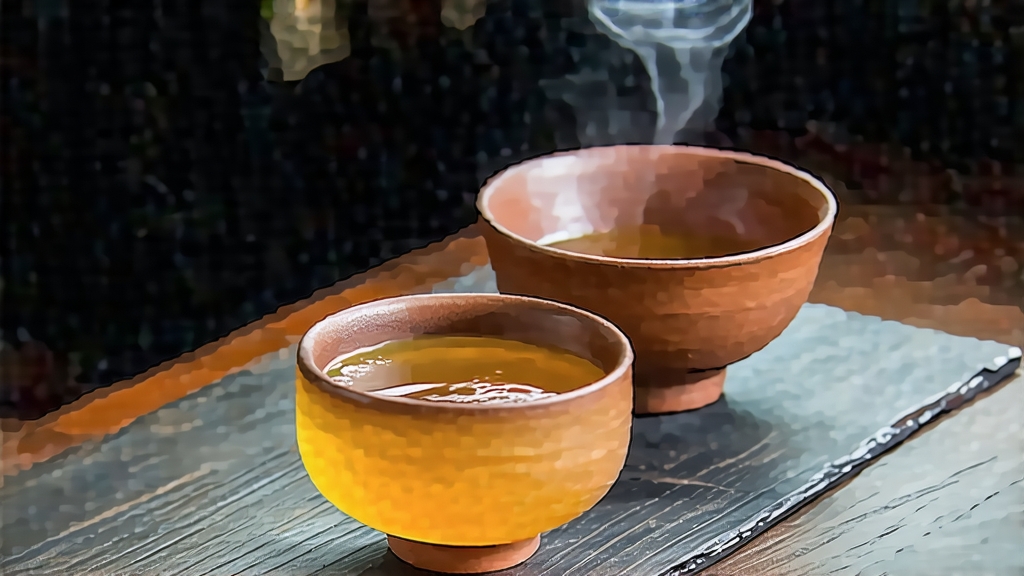
If green tea is the youthful scholar of Chinese leaf and pu-erh the bearded sage, then Tie Guan Yin is the meditative poet who walks between their worlds. Known in the West as “Iron Goddess of Mercy,” this oolong from southern Fujian’s Anxi County carries five centuries of myth, craftsmanship, and sensory drama in every twisted, jade-green pellet. To understand China’s most famous oolong is to witness a dialogue between soil and fire, between the cool breath of highland mist and the patient hand of the charcoal master.
Legend places the cultivar’s birth in the 18th century. A poor farmer named Wei Yin, so the story goes, tended a dilapidated shrine dedicated to Guan Yin, the Bodhisattva of Compassion. Every dawn he swept the courtyard and lit a single stick of incense before returning to his rocky fields. One night in a dream the goddess guided him to a cave behind the temple where a lone tea shrub shimmered in moonlight. Wei transplanted it, nurtured it, and from its leaves produced a liquor so fragrant that it seemed to carry the deity’s own whisper. The village prospered; the tea was named Tie Guan Yin—“Iron” for its dense, heavy leaf and “Goddess of Mercy” for its origin story. Historians debate the myth, but agree that the cultivar emerged during the Yongzheng reign (1723–1735) when Anxi farmers began selecting and domesticating wild tea trees that tolerated poor granitic soil and produced an unusually floral aroma.
Today Tie Guan Yin is not a single tea but a spectrum of styles divided along two axes: horticulture and roasting. The original Hongxin (“red-heart”) varietal, with its burgundy-tinted young leaves, remains the most prized, yet Tuoye, Jinxuan, and even experimental hybrids are now cultivated at elevations between 300 and 1,200 m. Processing, however, is where the leaf truly becomes Tie Guan Yin. Anxi masters speak of “one day, one life”: plucking at dawn, withering under high-mountain sun, tumbling in bamboo drums to bruise the edges, then resting in conditioned rooms where oxidation hovers at 20–40 %. The goal is partial oxidation—enough to generate orchid and cream notes, yet stop short of the deeper maltiness found in Wuyi rock oolongs.
Once oxidation reaches the desired level, the leaf is fixed with a brief blast of 280 °C heat, locking in fragrance before the shaping begins. A series of hot presses and cloth-wrapped rolls converts fluffy leaves into the iconic pellet, tight as a musket ball. Traditionalists then load the tea into low-ash charcoal ovens fired by longan wood, roasting for 6–12 hours at 60–80 °C, repeating the cycle up to three times over two months. The result is the “Nong Xiang” (heavy aroma) style: liquor the color of topaz, aroma of toasted almond and honeysuckle, a finish that lingers like church incense. Since the 1990s, market demand shifted toward “Qing Xiang” (light aroma): minimal roasting, electric dryers, greener leaf, neon-green infusion, and a bright, almost gardenia-like bouquet. Purists argue this is perfume without soul; millennials love its accessibility. Both styles, however, must pass the county’s official sensory benchmark: a balanced “Yin Yun”—a cooling sensation in the throat that the locals describe as “the goddess’s breath.”
To brew Tie Guan Yin well is to conduct a small chamber orchestra. Begin with spring water brought to 95 °C; hard water mutes aroma while 100 °C scalds the leaf. Pre-warm a 120 ml gaiwan or tiny Yixing teapot made from duan ni clay whose porosity flatters floral notes. Use 1 g of leaf per 15 ml of vessel—seemingly excessive, yet the tight pellets need room to unfurl. The first infusion, a lightning 5-second rinse, is discarded; it awakens the leaf and rinses away charcoal dust. Subsequent steeps progress like chapters: 15 s, 25 s, 35 s, 50 s, then leaps of 30 s thereafter. A quality Tie Guan Yin yields eight to ten infusions, each revealing a new facet: the opening burst of lilac, the mid-palate cream, the mineral snap reminiscent of wet slate, and finally a sweet, empty-cup aroma that Chinese poets call “the bottom of the sea